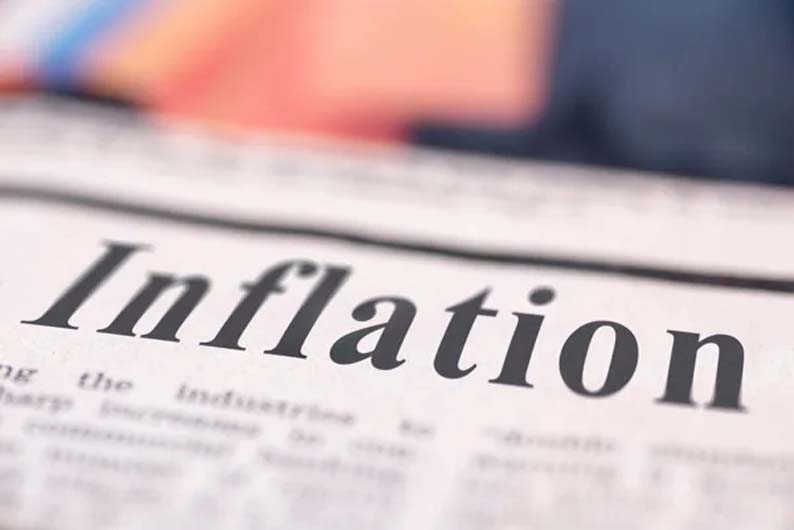By Craig Erlam
It was a rough day of trading on Wednesday, with data from China and the UK not aligning with the optimistic position investors have committed to at the start of the year.
UK inflation figures were slightly higher than expected, with headline CPI rising a little back to 4%, rather than falling to 3.8%, and core remaining at 5.1% rather than falling to 4.9%.
This is hardly a massive blow, but investors have become accustomed recently to data delivering and more, so this is perhaps being viewed as a bigger setback than it actually is.
This is the problem with how markets positioned going into the end of 2023 and at the start of this year, there isn’t much wiggle room as far as the data is concerned.
Small disappointments can knock market sentiment in a more significant way which could make the rest of Q1 a more turbulent ride than investors would prefer.
Chinese consumer activity a point of weakness
The Chinese data wasn’t great, although it’s not the end of the world either.
Unemployment unexpectedly crept higher to 5.1%, while GDP in the fourth quarter rose to 5.2%, marginally lower than expected. Retail sales were the biggest disappointment, slipping back to 7.4%, but none of the data is a complete shock.
The Chinese recovery is likely to be bumpy because of the nature of how the slowdown has occurred.
Consumer confidence is on its knees and unlikely to bounce back quickly or easily, so retail sales figures will probably remain volatile. The economy growing more than 5% is arguably the most important thing, even if a stronger consumer would ultimately be the goal.
US in a position to thrive
The US economy is in a world of its own, not just displaying the kind of surprising resilience that some of its peers have, but performing strongly despite interest rates being above 5%.
And at the same time, the labour market is no longer red hot, but still warm and inflation is quickly falling back to target which will enable the Fed to start cutting rates soon.
The latest impressive report came from the retail sector, where sales rose 0.6% in December, compared with a month earlier, while core sales were up 0.4%.
In both cases, the performance was 0.2% above estimates and suggests that going into 2024, while others are flirting with technical recession, the US economy is well positioned to enjoy a strong year.
Eurozone inflation on course for Q1 rate cut
Eurozone final inflation figures threw out no surprises, with the initial readings all unrevised for December.
That said, what they did was confirm that the ECB is well on its way to delivering price stability, of inflation below, but close to 2%. Headline inflation rose from 2.4% to 2.9% last month, but it’s expected to decline again over the next couple of months which will ensure March is the live meeting no policymaker currently wants us to believe it will be.
The bloc may already be in recession and its largest economy perhaps in a double dip, there’s only so cautious and stubborn the central bank can be before its actions are once again more damaging than good.
Oil prices fall after Chinese data
Oil prices have fallen around 2%, not helped by the Chinese data and broader risk-off sentiment in the markets as traders slightly pare back rate cuts.
Of course, these odds are changing all the time, and rate cuts are still very aggressively priced but Wednesday was a corrective one contributing to the weaker oil prices.
Gold looking vulnerable
Gold was hit for a second day on the back of market positioning being slightly less bullish on rate cuts.
US yields have crept higher over the last couple of days, with the 10-year moving back above 4% and that has weighed on the yellow metal.
Gold suddenly looks a little vulnerable as it approaches the psychologically significant $2,000 having just hit a one-month low.
Has bitcoin lost momentum?
The risk-off mood isn’t playing too well with bitcoin either, with the price off around 2% after consolidating in recent days.
It’s been in corrective mode since after the ETF approval and is now over 13% down in just under a week.
We continue to see higher lows in the price so while momentum is lost and the ETF is old news, it’s still trading in a bullish pattern.
That said, both may suggest that’s about to change, at which point $40,000 could start to look vulnerable.
Craig Erlam is Senior Market Analyst, UK & EMEA at OANDA
Opinions are the author’s, not necessarily that of OANDA Global Corporation or any of its affiliates, subsidiaries, officers or directors. Leveraged trading is high risk and not suitable for all. Losses can exceed investments.







